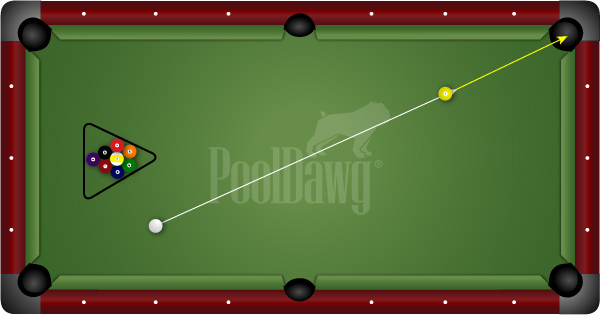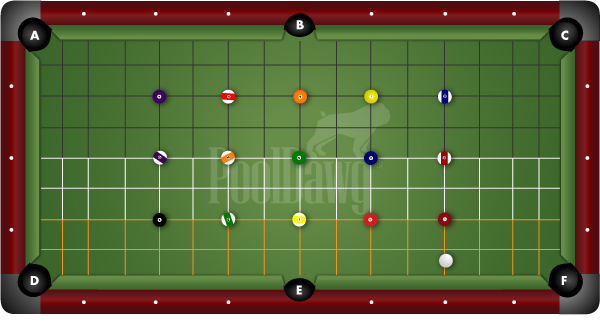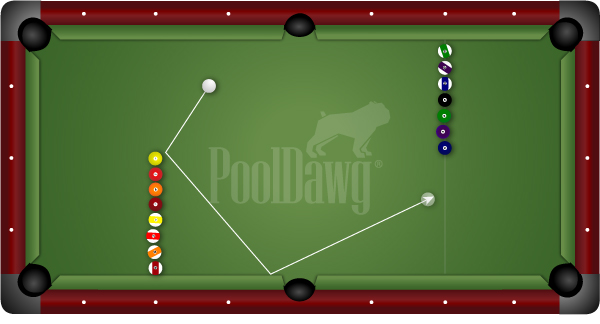There are a ton of great instructional articles out there. I love reading them, learning new things and new ideas to try at the table. But, one thing I haven’t seen much of is articles on how to structure a practice session. What exactly do we have to work on to improve our pool game and what is the best way to go about it?
Let’s understand a little something about practice first. We can do one drill over and over again, or we can do random skills one time and measure the results, and both methods are useful. I like to use the repetition method to learn a skill, but once I reach a certain standard, I like to do random drills that are more like a real game.
Here is how I would structure a good practice session for an intermediate player. This session takes about 1.5 to 2 hours and works on stroke, speed control, patterns, cue ball skills, and competition skills.
To work on our stroke, I like Bert Kinister’s Mighty X.
Here is the set up and how I do it.

Set up this long, straight shot. You can only pull the cue stick back one time before you shoot, and you are trying to get the cue ball to replace the object ball and not stop. I do one hundred of these a day and it takes about 45 minutes. This drill teaches gets you to fall on the shot correctly, teaches finding the vertical axis, and gives you a much better touch for speed control. (Note, a stop shot has a bigger skid zone than replacing the object ball does.)
After I do my stroke development drills, I work on speed. We have previously looked at one speed drill, rolling the ball further than the one before, and that is an excellent drill to work on for at least 30 minutes. We are in the hour to hour and fifteen minute range now.
Next up is a pattern drill. These are drills that help you think better. I like to think that if my stroke is straighter, my cue ball speed control better, and I think better, I have a better chance to win.
Here is a pattern drill from Rags Fitzpatrick from back in the day, but it still is a great drill.

What you are trying to do here is pocket all the balls without hitting a rail or another ball. This is a lot harder than it looks, but as you get better at it, you will notice your pattern playing improve in quality. I like to work on this for at least 15 minutes, or until I finish it once. If 15 balls is too hard for you right now, start with 9.
We have worked on stroke, speed control, and patterns and I think you need to do that every day to keep improving and remain sharp. Now let’s look at some skills that we can work on. I like to do different skills each day of the week so I don’t get bored. For example, Monday might be bridge, rail, jump and safety day, and Tuesday might be a follow drill, Wednesday a draw drill etc.
Here is a sample skill drill for you to consider.
What you are trying to do is run these balls in rotation. Put as many balls on the table that you can comfortably run at least half the time. We don’t want to be practicing failure!!! Do this drill for 15-30 minutes on the days you have it scheduled.

What you want to do here is run the balls in rotation. If 15 is too hard, try 7 or 9 etc.
As a finale to each practice day, I race the ghost to 5. This is an important part of each practice as I test my skills against an opponent who doesn’t miss. When you start beating the ghost, you have some game.
Good luck and see you on the road.